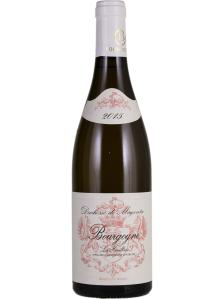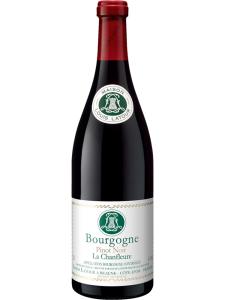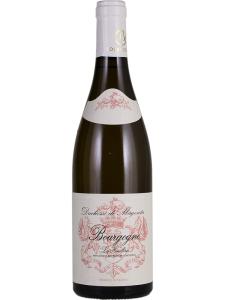Bourgogne is the generic, catch-all appellation title for the Burgundy wine region in eastern France ('Bourgogne' is the French name for Burgundy).
Burgundy has a complex and comprehensive appellation system; counting Premier Cru and Grand Cru titles, the region has more than than 700 appellation titles for its wines. Thus Bourgogne wines often come from a vineyard (or, several distinct vineyards) without their own district-specific, village-specific or even vineyard-specific appellation title.
A standard Bourgogne wine can be made from grapes grown in any one – or more – of 300 communes across Burgundy.
Unlike Burgundy's village appellations, which specialize in either red or white wine or a combination of the two, Bourgogne covers red, white and rosé wines, and even sparkling as in the case of Cremant de Bourgogne and Bourgogne Mousseux.
To accommodate the various wine styles produced in Burgundy, there are six key Bourgogne appellations: 'Bourgogne' itself, 'Bourgogne Aligote', 'Bourgogne Mousseux', 'Bourgogne Grand Ordinaire', 'Bourgogne Passe-tout-grains' and 'Cremant de Bourgogne'. There are even two appellations devoted to the region's eau-de-vie brandies: 'Eau-de-vie de Vin de Bourgogne' and 'Eau-de-vie de Marc de Bourgogne'.
Some of the titles above may be suffixed with the name of the particular sub-region, village or vineyard where the grapes were grown. The six sub-regions which may be stated are: 'Hautes Cotes de Beaune', 'Hautes Cotes de Nuits', 'Cote Chalonnaise', 'Cote du Couchois', 'Cotes d'Auxerre' and 'Tonnerre'. The latter was created as recently as 2006, covers a group of villages just east of Chablis.
There are also four villages and four named vineyard sites which may be stated on labels of Bourgogne wine. The villages are Chitry, Coulanges-la-Vineuse, Epineuil and Vezelay. The four vineyard sites are Cote de Saint-Jacques (in Joigny), Le Chapitre (in Chenove), La Chapelle Notre Dame (in Ladoix-Serrigny) and Montrecul (in Dijon).
Each Bourgogne appellation may be followed by the color of the wine (blanc, rouge or rosé) as appropriate, and where it is not already implied by the appellation itself. Bourgogne Rouge is produced almost exclusively from Pinot Noir and is distinct from Bourgogne Blanc, which is made from white grapes (mostly Chardonnay). Wines like Bourgogne Tonnerre need no color statement, as the title is reserved exclusively for white wines. The term Clairet is specifically reserved for rosé wines but is rarely used, as the word rosé is more internationally recognized. (© Proprietary Content, Wine-Searcher)
One key difference between Bourgogne wines and those made under Village, Premier Cru and Grand Cru appellations is that the grape variety used in the wine may be stated on the label. This has helped with the perception and marketability of Burgundy's wines in overseas markets, where varietal labeling is the norm. For more information about Burgundy wine labels, see Burgundy Wine Label Information.





